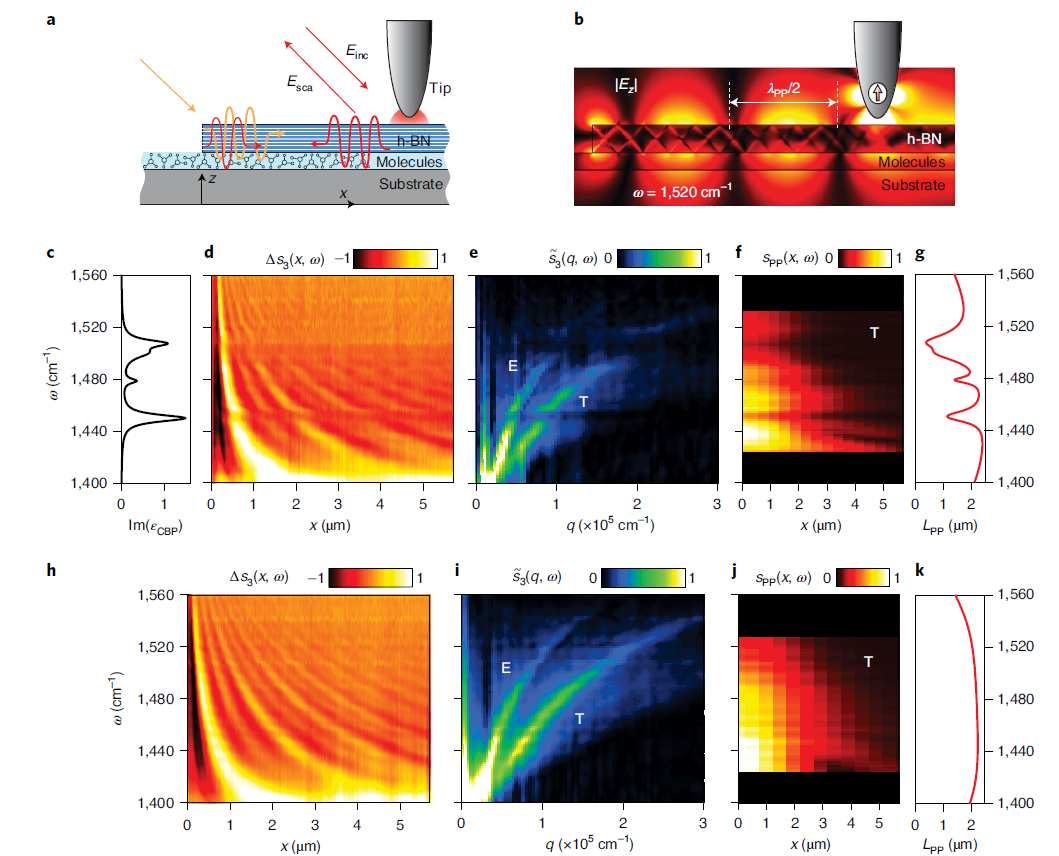Strong coupling between propagating phonon polaritons and organic molecules observed for the first time
The so-called van der Waals materials consist of two-dimensional layers bound by weak van der Waals forces. After the isolation of graphene, the field of two-dimensional van der Waals materials has experienced an explosive growth and new families of two-dimensional systems and block-layered bulk materials have been created.
This growth has been fuelled mainly by the possibility of tuning a set of remarkable electronic properties using an array of methods (thickness control, doping, intercalation, proximity effects, to name a few) coupled with a relative simplicity of fabrication. These two characteristics, that make layered van der Waals materials similar to Lego constructions, are attractive from both practical and fundamental points of view.
In a parallel development, phonon polaritons – the result from the coupling of an infrared photon with an optic phonon – with extraordinary properties have been discovered in polar van der Waals crystals. Two examples are dielectric hexagonal boron nitride, where such exotic phenomena as ray propagation or hyper-lensing effects can be observed, or the semiconductor α-MoO3, which reveals in-plane anisotropic propagation with ultra-low losses, offering opportunities for the development of a planar directional control of light–matter interactions at the nanoscale.
Since phonon polaritons in many van der Waals materials spectrally coincide with typical mid-infrared molecular vibrational resonances, these polaritons could be a way to achieve a strong vibrational coupling. Theoretically, this interaction could be the key for developing ultrasensitive infrared spectroscopy and a new way to modifying chemical properties of molecules. The problem is that this most interesting interaction has not been proven experimentally to exist in real space. Till now.

A team of researchers has just demonstrated 1 by nanoimaging that vibrational strong coupling can be achieved between propagating phonon polaritons in thin van der Waals crystals (hexagonal boron nitride) and molecular vibrations in adjacent thin molecular organic layers.
Mid-infrared nanoimaging experiments were used to study the interaction of ultra-confined propagating phonon polaritons in van der Waals materials with molecular vibrations in sub-100 nm thick organic layers. Specifically, phonon-polariton interferometry was performed in thin, continuous hexagonal boron nitride layers interacting with 4,4′-bis(N-carbazolyl)-1,1′-biphenyl molecules. The researchers retrieved —in good agreement—experimentally and theoretically the quasi-normal modes of the coupled system, revealing a strong coupling.
Interestingly, a numerical study predicts that few-layer hexagonal boron nitride layers may enable strong coupling to be reached even in the case of atomically thin molecular layers, thus underlining the potential of phonon polaritons to become a platform for ultrasensitive on-chip spectroscopy devices.
Author: César Tomé López is a science writer and the editor of Mapping Ignorance.
Disclaimer: Parts of this article might have been copied verbatim or almost verbatim from the referenced research paper.
References
- Andrei Bylinkin, Martin Schnell, Marta Autore, Francesco Calavalle, Peining Li, Javier Taboada-Gutièrrez, Song Liu, James H. Edgar, Fèlix Casanova, Luis E. Hueso, Pablo Alonso-Gonzalez, Alexey Y. Nikitin & Rainer Hillenbrand (2020) Real-space observation of vibrational strong coupling between propagating phonon polaritons and organic molecules Nature Photonics doi: 10.1038/s41566-020-00725-3 ↩